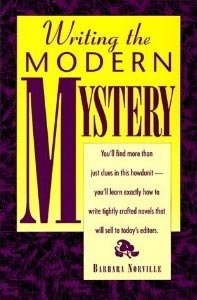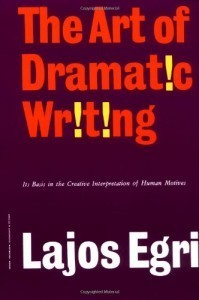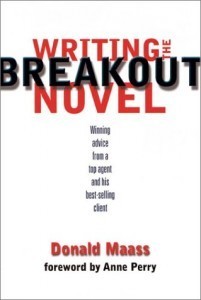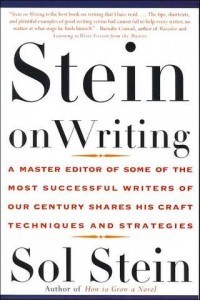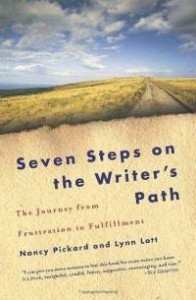Alison Kent's Blog, page 16
July 2, 2011
Scenes & Sequels – a mini workshop
When I posted in 2009 (and again earlier this week) about the writing books I can't live without, Rob asked if I would go into more detail about Scene & Sequel. If memory serves, the first time I heard the term was in 1993 when I attended the first meeting of the best critique group to ever exist. (You can see a brief snippet of three of us in this 1995 video from CBS 48 Hours.) The ladies I worked with over the next several years were the ones who introduced me to Dwight Swain's book mentioned below.
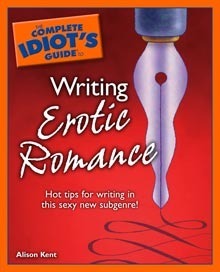 I actually wrote about scene and sequel in The Complete Idiot's Guide to Writing Erotic Romance. Though the intent of the book is to explain the marriage of sex with plot in an erotic romance, the book spends a lot of time on novel writing basics because the best genre novels follow the storytelling structure readers expect. Here's a snippet from Chapter 8:
I actually wrote about scene and sequel in The Complete Idiot's Guide to Writing Erotic Romance. Though the intent of the book is to explain the marriage of sex with plot in an erotic romance, the book spends a lot of time on novel writing basics because the best genre novels follow the storytelling structure readers expect. Here's a snippet from Chapter 8:
Lights, Camera, Action!
I first ran into the concept of structuring scenes in Dwight Swain's wonderful book Techniques of the Selling Writer. Next to Christopher Vogler's The Writer's Journey, Swain's book has had the most impact on my writing. Not only has it helped me shape my chapters, it also has enabled me to fix most of the pacing problems that cropped up in my work when I began to write.
As I did with Vogler's book, I took from Swain's what resonated with my way of writing and tweaked it until we were a perfect fit!
Let's take a closer look at what it means to write in scenes, and how doing so can improve the framework of a novel.
What Is a Scene?
A scene is a vehicle for delivering the action of a story. Each character in a scene needs to have a goal – one he or she wants to accomplish in that short span of time as opposed to an overall story goal that won't be met until the end of your book. (If the goals of your scene's characters are in opposition, all the better!) Your characters are then thwarted from reaching said goals by some sort of obstacle. (Are you seeing a pattern here? Just as a plot needs characters with goals, motivations, and conflicts, so does a scene.) This conflict results in a scene reversal or other upheaval that makes things worse for your story people while hooking your reader's interest. Whatever the trouble, it keeps her turning the pages, raising questions for her and for your character about what happens next. It's a sure way to build a successful scene!
Each scene you write also needs to act as a puzzle piece and fit into your story's overall arc. Think of a scene as a building block containing its own mini-arc that helps support the larger framework. If you're interested in a more in-depth instruction about the structure of a scene and each of its components, I recommend reading Robert McKee's Story.
What Follows a Scene?
Once you've written a scene, you'll want to write your characters' response to it. This is where a character, usually through an introspective passage, processes what has happened and makes a choice as to what to do next. (If you're reading Swain's book, check out his section on scene and sequel.) Basically, this creates breathing room for your reader. Along with your character, she is given time to digest all that's gone before as well as a chance to observe your character's reasoning process as he considers his options.
I recently read an article that argued that this method of structuring a story was outdated because readers reading in today's fast-paced society don't have time to spend slogging their way through the long introspective pages. Who said anything about long introspective pages? You can convey a character's thoughts in a matter of sentences! Want to see how?
Brandon waited until Rachel stepped onto the subway before scrubbing his hands down his face with regret. He should have waited until tonight to tell her about his trip to Tokyo. Over dinner would've been better, giving them time alone and all. In fact, screw their usual Monday night burgers. She deserved wine and candlelight and her favorite shrimp scampi. They could finish up the conversation then. He bounded up the stairs, pulling his cell phone from his waist to call for reservations.
See how quick that was? You have the response (regret), the predicament solved (finishing conversation over dinner), then the step (making reservations) that propels Brandon into the next scene. Following up an intense action scene or one that is highly emotional with this sort of short break allows your reader a bit of down time, and also creates a way to move easily from one scene to the next.
When doing a search for more scene & sequel info, I came across a wonderful article by Randy Ingermanson. Here's a short piece from his Writing the Perfect Scene:
As we said, the Scene has the three parts Goal, Conflict, and Disaster. Each of these is supremely important. I am going to define each of these pieces and then explain why each is critical to the structure of the Scene. I assume that you have selected one character to be your Point Of View character. In what follows, I'll refer to this character as your POV character. Your goal is to convincingly show your POV character experiencing the scene. You must do this so powerfully that your reader experiences the scene as if she were the POV character.
1. Goal: A Goal is what your POV character wants at the beginning of the Scene. The Goal must be specific and it must be clearly definable. The reason your POV character must have a Goal is that it makes your character proactive. Your character is not passively waiting for the universe to deal him Great Good. Your character is going after what he wants, just as your reader wishes he could do. It's a simple fact that any character who wants something desperately is an interesting character. Even if he's not nice, he's interesting. And your reader will identify with him. That's what you want as a writer.
2. Conflict: Conflict is the series of obstacles your POV character faces on the way to reaching his Goal. You must have Conflict in your Scene! If your POV character reaches his Goal with no Conflict, then the reader is bored. Your reader wants to struggle! No victory has any value if it comes too easy. So make your POV character struggle and your reader will live out that struggle too.
3. Disaster: A Disaster is a failure to let your POV character reach his Goal. Don't give him the Goal! Winning is boring! When a Scene ends in victory, your reader feels no reason to turn the page. If things are going well, your reader might as well go to bed. No! Make something awful happen. Hang your POV character off a cliff and your reader will turn the page to see what happens next.
That's all! There is literally nothing more you need to know about Scenes. Now let's look at Sequels . . .
The Sequel has the three parts Reaction, Dilemma, and Decision. Again, each of these is critical to a successful Sequel. Remove any of them and the Sequel fails to work. Let me add one important point here. The purpose of a Sequel is to follow after a Scene. A Scene ends on a Disaster, and you can't immediately follow that up with a new Scene, which begins with a Goal. Why? Because when you've just been slugged with a serious setback, you can't just rush out and try something new. You've got to recover. That's basic psychology.
1. Reaction: A Reaction is the emotional follow-through to a Disaster. When something awful happens, you're staggering for awhile, off-balance, out of kilter. You can't help it. So show your POV character reacting viscerally to his Disaster. Show him hurting. Give your reader a chance to hurt with your characters. You may need to show some passage of time. This is not a time for action, it's a time for re-action. A time to weep. But you can't stagger around in pain forever. In real life, if people do that they lose their friends. In fiction, if you do it, you lose your readers. Eventually, your POV character needs to get a grip. To take stock. To look for options. And the problem is that there aren't any . . .
2. Dilemma: A Dilemma is a situation with no good options. If your Disaster was a real Disaster, there aren't any good choices. Your POV character must have a real dilemma. This gives your reader a chance to worry, which is good. Your reader must be wondering what can possibly happen next. Let your POV character work through the choices. Let him sort things out. Eventually, let him come to the least-bad option . . .
3. Decision: A Decision is the act of making a choice among several options. This is important, because it lets your POV character become proactive again. People who never make decisions are boring people. They wait around for somebody else to decide. And nobody wants to read about somebody like that. So make your character decide, and make it a good decision. Make it one your reader can respect. Make it risky, but make it have a chance of working. Do that, and your reader will have to turn the page, because now your POV character has a new Goal.
And now you've come full circle. You've gone from Scene to Sequel and back to the Goal for a new Scene. This is why the Scene-Sequel pattern is so powerful.
And that's it! Piece o' cake!
And now I'll give away a copy of THE COMPLETE IDIOT'S GUIDE TO WRITING EROTIC ROMANCE. Remember, it's just not about the smexy! Just leave a comment telling me you're interested. You can also comment on the post and NOT be entered. Only those commenters who specifically say they do want to be entered will go into the hat. I'll draw from the pool on Tuesday, July 5, 2011 at noon CDT.
Writing the Modern Mystery by Barbara Norville
If you have the imagination to perpetuate a paper crime and then solve it, Barbara Norville, an experienced mystery editor, has the blueprint for mystery writing success – and she shares it step by step in this book.A step-by-step guide that takes writers through all phases of writing modern crime and detective stories — from researching to plotting, characterization to pacing.
I'll be posting giveaway books throughout the day each day this week. If you're interested in this book, leave a comment below. I'll draw all of this week's winners on Sunday, July 3, 2011 and post them that day. You will need to check back and send me your mailing address by Sunday, July 10, 2011 CDT if you are one of the winners.
July 1, 2011
Wabi Sabi for Writers by Richard R. Powell
- From the author of the successful Wabi Sabi Simple
- The first book to apply the principles of wabi sabi to writing
- Author Richard Powell studied creative writing at the Kootenay School of Writing under Margaret Atwood, Fred Wah, and Audrey Thomas
This eloquent and thoughtful guide explores the unique wabi sabi approach to:
- Inspiration–transforming strong feelings into art
- Interest–understanding and stimulating the reader's motivation
- Community–writer's groups and what they have to offer
- Enlightenment–practicing Zen through writing
A striking follow-up to Wabi Sabi Simple, this thoughtful, engaging volume provides practical suggestions along with accessible philosophy to make the writing life more productive, peaceful, and fulfilling.
I'll be posting giveaway books throughout the day each day this week. If you're interested in this book, leave a comment below. I'll draw all of this week's winners on Sunday, July 3, 2011 and post them that day. You will need to check back and send me your mailing address by Sunday, July 10, 2011 CDT if you are one of the winners.
The Art of Dramatic Writing by Lajos Egri
Amid the hundreds of "how-to" books that have appeared in recent years, there have been very few which attempted to analyze the mysteries of play-construction. This book does that – and its principles are so valid that they apply equally well to the short story, novel and screenplay.Lajos Egri examines a play from the inside out, starting with the heart of any drama: its characters. For it is people – their private natures and their inter-relationships – that move a story and give it life. All good dramatic writing depends upon an understanding of human motives. Why do people act as they do? What forces transform a coward into a hero, a hero into a coward? What is it that Romeo does early in Shakespeare's play that makes his later suicide seem inevitable? Why must Nora leave her husband at the end of A Doll's House?
These are a few of the fascinating problems which Egri analyzes. He shows how it is essential for the author to have a basic premise – a thesis, demonstrated in terms of human behavior – and to develop his dramatic conflict on the basis of that behavior. Premise, character, conflict: this is Egri's ABC. His book is a direct, jargon-free approach to the problem of achieving truth in a literary creation.
I'll be posting giveaway books throughout the day each day this week. If you're interested in this book, leave a comment below. I'll draw all of this week's winners on Sunday, July 3, 2011 and post them that day. You will need to check back and send me your mailing address by Sunday, July 10, 2011 CDT if you are one of the winners.
Writing the Breakout Novel by Donald Maass
Take your fiction to the next level! Maybe you're a first-time novelist looking for practical guidance. Maybe you've already been published, but your latest effort is stuck in mid-list hell. Whatever the case may be, author and literary agent Donald Maass can show you how to take your prose to the next level and write a breakout novel—one that rises out of obscurity and hits the best-seller lists. Maass details the elements that all breakout novels share—regardless of genre—then shows you how to use them to write books that can stand out and succeed in a crowded marketplace.You'll learn to:
# develop an inspired premise that sets your novel apart from the competition
# establish a powerful and sweeping sense of time and place
# create larger-than-life characters that step right off the page
# sustain a high degree of narrative tension from start to finish
# weave sub-plots into the main action for a complex, engrossing story
# explore universal themes that will interest a broad audience of readers.Then, using examples from the recent works of several best-selling authors—including novelist Anne Perry—Maass illustrates methods for upping the ante in every aspect of your novel writing. You'll capture the eye of an agent, generate publisher interest, and lay the foundation for a promising career.
"Word of mouth is the secret grease of publishing. It is the engine that drives breakouts."–Donald Maass, from the Introduction
The key to writing a "breakout" novel has nothing to do with million-dollar publicity budgets, huge advances or name recognition. It comes from writing the kind of novel that gets people talking and creates a growing wave of excitement and support that carries your work along for the ride.
Calling upon over two decades of experience in the publishing industry, as both an author and literary agent, Donald Maass explains how to imbue your novel with the qualities that inspire just such a reaction. He'll show you how to:
# find—then push beyond—a category niche
# master the mechanics of the breakout novel and apply them to your own work
# interest agents and publishers with a compelling, original story
# create work that generates extraordinary word of mouth You'll learn to take your fiction to the next level of storytelling, while establishing the career—and recognition—you've always dreamed of.
I'll be posting giveaway books throughout the day each day this week. If you're interested in this book, leave a comment below. I'll draw all of this week's winners on Sunday, July 3, 2011 and post them that day. You will need to check back and send me your mailing address by Sunday, July 10, 2011 CDT if you are one of the winners.
June 30, 2011
Stein on Writing by Sol Stein
Whether you are an accomplished professional, a novelist, story writer, or a writer of nonfiction, you will find a wealth of immediately useful guidance not available anywhere else. As Sol Stein explains, "This is a not a book of theory. It is a book of usable solutions; how to fix writing that is flawed, how to improve writing that is good, how to create interesting writing in the first place."You will find one of the great unspoken secrets of craftsmanship in Chapter 5, called "Markers: The Key to Swift Characterization." In Chapter 7, Stein reveals for the first time in print the system for creating instant conflict developed in the Playwrights Group of the Actors Studio, of which he was a founder. In "Secrets of Good Dialogue," Stein gives you usable techniques that not only make verbal exchanges exciting but that move the story forward immediately. You won't have to struggle with flashbacks or background material after you've read Chapter 14, which shows you how to bring background into the foreground.
Writers of both fiction and nonfiction will relish the amphetamines for speeding up pace, and the many ways to liposuction flab, as well as how to tap originality and recognize what successful titles have in common. Nonfiction writers will find a passport to the new revolution in journalism and a guide to using the techniques of fiction to enhance nonfiction. You'll discover literary values that enhance writing, providing depth and resonance. In Chapters 32 and 33 you will learn why revising by starting at page one can be a serious mistake, and how to revise without growing cold on your manuscript.
I'll be posting giveaway books throughout the day each day this week. If you're interested in this book, leave a comment below. I'll draw all of this week's winners on Sunday, July 3, 2011 and post them that day. You will need to check back and send me your mailing address by Sunday, July 10, 2011 CDT if you are one of the winners.
The Art of Fiction by John Gardner
John Gardner was almost as famous as a teacher of creative writing as he was for his own works. In this practical, instructive handbook, based on the courses and seminars that he gave, he explains, simply and cogently, the principles and techniques of good writing.Review:
"The Art of Fiction is a 'how to' guide for the neophyte who wants to sharpen his writing skills. Its author, the late John Gardner, was not only an accomplished writer but a teacher as well, having been a veteran of many a fiction workshop. Gardner's teaching experience led him to concentrate on technique as a means to successful fiction writing. His book is a collection of do's and don'ts for the young writer, supplemented with examples of the right and wrong ways of writing. Above all, Gardner believed that practice makes perfect, and he has included numerous writing exercises for those who wish to improve. Gardner may be naïve in concluding that anyone who wants to write can, but his optimistic teaching approach is infectious and is sure to encourage those who until now have been too shy to try." Reviewed by Daniel Weiss, Virginia Quarterly Review (Copyright 2006 Virginia Quarterly Review)
I'll be posting giveaway books throughout the day each day this week. If you're interested in this book, leave a comment below. I'll draw all of this week's winners on Sunday, July 3, 2011 and post them that day. You will need to check back and send me your mailing address by Sunday, July 10, 2011 CDT if you are one of the winners.
The Key by James N. Frey
In his widely read guides How to Write a Damn Good Novel and How to Write a Damn Good Novel II: Advanced Techniques, popular novelist and fiction-writing coach James N. Frey showed tens of thousands of writers how—starting with rounded, living, breathing, dynamic characters—to structure a novel that sustains its tension and development and ends in a satisfying, dramatic climax.Now, in The Key, Frey takes his no-nonsense, "Damn Good" approach and applies it to Joseph Campbell's insights into the universal structure of myths. Myths, says Frey, are the basis of all storytelling, and their structures and motifs are just as powerful for contemporary writers as they were for Homer. Frey begins with the qualities found in mythic heros—ancient and modern—such as the hero's special talent, his or her wound, status as an "outlaw," and so on. He then demonstrates how the hero is initiated—sent on a mission, forced to learn the new rules, tested, and suffers a symbolic death and rebirth—before he or she can return home. Using dozens of classical and contemporary novels and films as models, Frey shows how these motifs and forms work their powerful magic on the reader's imagination.
The Key is designed as a practical step-by-step guide for fiction writers and screen writers who want to shape their own ideas into a mythic story.
I'll be posting giveaway books throughout the day each day this week. If you're interested in this book, leave a comment below. I'll draw all of this week's winners on Sunday, July 3, 2011 and post them that day. You will need to check back and send me your mailing address by Sunday, July 10, 2011 CDT if you are one of the winners.
June 29, 2011
Seven Steps on the Writer's Path by Nancy Pickard & Lynn Lott
The blank page, the impossible deadline, the rush of inspiration: There is no profession more maddening or more rewarding than being a writer. Yet surprisingly, all writers pass through the same sequence of stages in the course of their careers. It was this remarkable insight that inspired veteran authors Nancy Pickard and Lynn Lott to write one of the wisest and liveliest guides to the literary life ever penned— a volume of astonishing revelation, warm reassurance, brilliant encouragement, and welcome humor. No matter what you write or how much recognition you've received, you are bound to pass through the seven steps on the writer's path: Unhappiness, Wanting, Commitment, Wavering, Letting Go, Immersion, and Fulfillment.Whether you're a wannabe writer or a published literary veteran, you're bound to find this book a source of true delight, vital wisdom, and lasting inspiration.
I'll be posting giveaway books throughout the day each day this week. If you're interested in this book, leave a comment below. I'll draw all of this week's winners on Sunday, July 3, 2011 and post them that day. You will need to check back and send me your mailing address by Sunday, July 10, 2011 CDT if you are one of the winners.
The First Five Pages by Noah Lukeman
Whether you are a novice writer or a veteran who has already had your work published, rejection is often a frustrating reality. Literary agents and editors receive and reject hundreds of manuscripts each month. While it's the job of these publishing professionals to be discriminating, it's the job of the writer to produce a manuscript that immediately stands out among the vast competition. And those outstanding qualities, says New York literary agent Noah Lukeman, have to be apparent from the first five pages.The First Five Pages reveals the necessary elements of good writing, whether it be fiction, nonfiction, journalism, or poetry, and points out errors to be avoided, such as
* A weak opening hook
* Overuse of adjectives and adverbs
* Flat or forced metaphors or similes
* Melodramatic, commonplace or confusing dialogue
* Undeveloped characterizations and lifeless settings
* Uneven pacing and lack of progressionWith exercises at the end of each chapter, this invaluable reference will allow novelists, journalists, poets and screenwriters alike to improve their technique as they learn to eliminate even the most subtle mistakes that are cause for rejection. The First Five Pages will help writers at every stage take their art to a higher — and more successful — level.
I'll be posting giveaway books throughout the day each day this week. If you're interested in this book, leave a comment below. I'll draw all of this week's winners on Sunday, July 3, 2011 and post them that day. You will need to check back and send me your mailing address by Sunday, July 10, 2011 CDT if you are one of the winners.
Alison Kent's Blog
- Alison Kent's profile
- 644 followers


